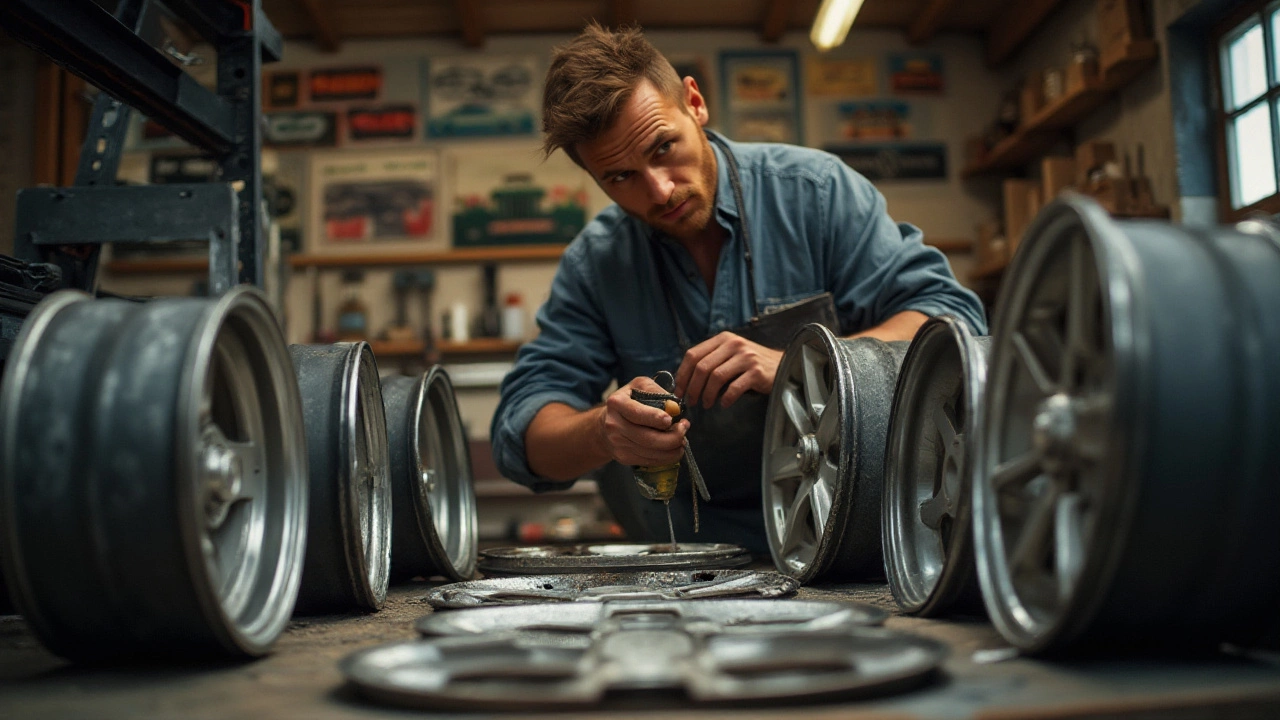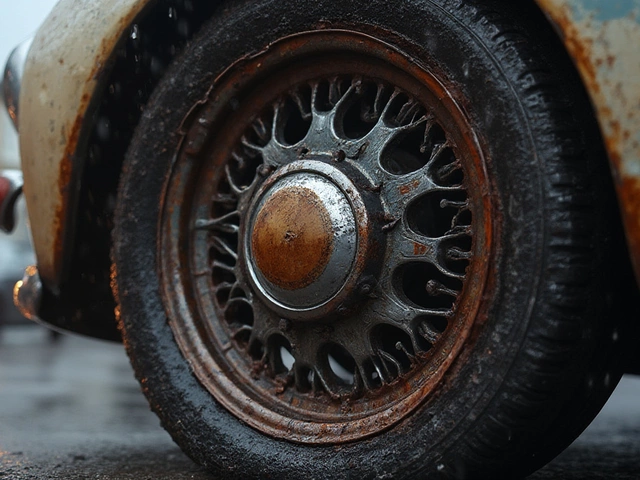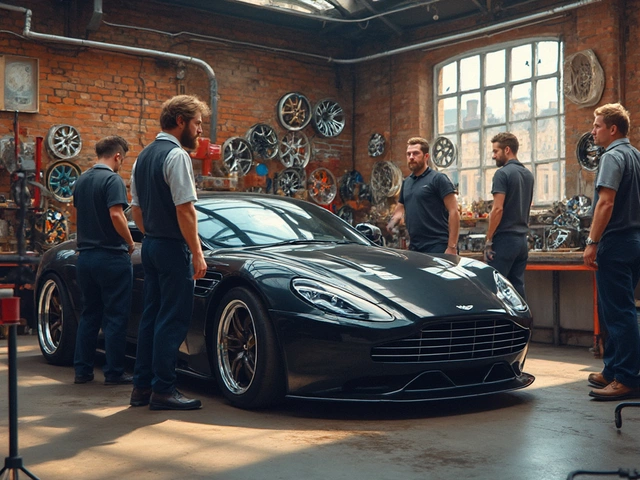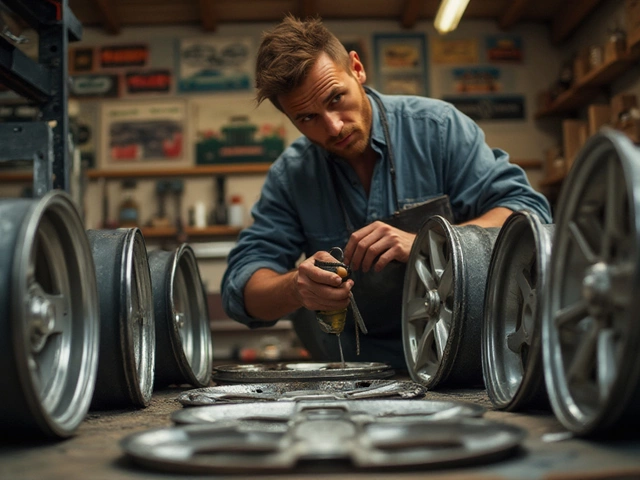When owning a car with alloy wheels, keeping them in pristine condition is not just a matter of pride but also practicality. Over time, wheels can collect damage from curbs, potholes, and general wear and tear. Getting them refurbished can be an effective solution to bring back their original charm. But how much does it cost, and what do you need to consider?
The expenses you'll face depend on a variety of elements, from the extent of the damage to the size of the wheels. Each repair situation is unique, calling for a clear understanding of what you're dealing with before taking the plunge. The goal is to make sure you're making not just an affordable choice, but a smart, long-term investment in your vehicle's aesthetics and safety.
- Understanding Alloy Wheel Refurbishment
- Factors Influencing Costs
- Types of Refurbishment Techniques
- Cost-Saving Tips
- Choosing the Right Service
Understanding Alloy Wheel Refurbishment
Alloy wheel refurbishment is a meticulous process that involves restoring wheels to their original glory, eliminating imperfections, and prolonging their lifespan. Many car enthusiasts opt for this service not just for aesthetic reasons, but to ensure their vehicle performs optimally. What makes alloy wheels so special is the mix of metals, typically aluminum or magnesium, offering a lightweight yet robust structure. This unique composition, however, makes them susceptible to damage from curb contact, potholes, and road salts, oftentimes leading to unsightly scratches, dents, and corrosion.
To refurbish alloy wheels, technicians must first assess the damage extent. This initial inspection is crucial as it determines whether a simple repair or a complete overhaul is necessary. Depending on the condition, refurbishment may involve processes like sanding, filling, painting, and applying protective coatings. Each step requires precision and skill, making it imperative to choose a reputable service provider who can ensure quality results. According to experts, regular maintenance and occasional refurbishment can add years to your wheels' lifespan.
It's noteworthy that techniques can vary widely. Some places use traditional manual methods, while others opt for advanced machine processes. A growing trend is the use of powder coating, a method praised for its durability and vibrant finish. Results can also be better when specialized tools and equipment are employed. In a survey conducted by a leading automobile association, vehicles with regularly maintained alloy wheels reported significantly fewer incidents of wheel-related malfunctions.
Interestingly, about 20% of car owners in the UK have invested in wheel refurbishments over the past year, highlighting its growing importance among drivers. Experienced professionals often suggest that even minor scuffs shouldn't be overlooked; doing so can prevent more severe damage over time. It's an investment in not just aesthetics, but vehicle safety and performance. As quoted in a recent article by Car Mechanics Magazine:
"Alloy wheel refurbishment isn't merely a cosmetic fix—it's a critical component of responsible car ownership."
Factors Influencing Costs
When it comes to getting your alloy wheels refurbished, it's critical to understand the various factors that can influence your final bill. The first major factor is the size of the wheels. Larger wheels command a higher cost for refurbishment because they require more material and labor. In addition, the complexity and design of the wheel can also play a role; intricate designs may take more time and skill to restore, thereby increasing the price.
Next on the list is the extent of the damage. Are the wheels simply scuffed or have they suffered serious structural harm? Minor blemishes and scratches are quicker and cheaper to fix, whereas bent or cracked wheels may need more intensive repairs. These conditions may sometimes necessitate specialized equipment or even partial replacement of sections, which drives costs even higher.
An often overlooked factor is the type of finish you desire after the refurbishment. Traditional finishes like powder coating can be affordable, but if you are aiming for a high-end glossy or custom finish, expect the costs to climb. Repair shops typically offer a range of finish options that vary in price, so it's useful to plan according to your budget and preferences.
The geographical location of the repair shop also plays a part. Urban areas or places with a higher cost of living usually see higher charges for wheel refurbishment services. Conversely, in smaller towns or regions where competition among auto repair shops is fierce, you might find slightly better deals.
Labor costs also vary widely depending on who you choose for the job. A prestigious, highly-skilled technician may charge more than a general mechanic. Yet, investing in quality service can be the smarter choice in the long run as it can save you from recurrent refinishing or even having to replace the wheels entirely.
According to a survey by Auto Repair Industry Magazine, "Many car owners have found that choosing quality over cost-cutting measures can lead to better durability and satisfaction with the refurbishment results."
Lastly, any additional services or customizations can also add to the final price. Some services bundle in perks like wheel balancing or tire rotation as part of the refurbishment package, which could potentially save money. Always ask for a breakdown of costs from your service provider to spot these inclusions.
Having a comprehensive understanding of these cost influencers not only makes you a well-informed consumer but also empowers you to make decisions that are financially prudent. Remember to weigh each of these factors carefully to get the best value for your money while revitalizing your car’s alloy wheels.

Types of Refurbishment Techniques
Diving into the realm of alloy wheel refurbishment is like stepping into a world of craftsmanship where skill and technology meet. There are several techniques available, each serving specific needs and offering varying levels of restoration. One can opt for simple cosmetic touch-ups or delve into thorough overhauls that ensure both visual and structural integrity.
The most basic method starts with a simple tidy-up, often referred to as a cosmetic repair. This is ideal for minor scuffs and scratches, where technicians focus mainly on the superficial surface. It usually involves sanding down the damage, applying filler where necessary, and repainting to blend in with the rest of the wheel. Such a process can often be completed in a day, perfect for those looking for a quick fix at an affordable price.
More challenging damage, such as that affecting the wheel's structure, requires a deeper dive. This is where the full refurbishment process comes into play. It begins with stripping the wheel of its existing coating, often using a method known as chemical stripping or blasting. This reveals the bare alloy beneath, allowing for a complete inspection and repair of cracks or bends. Observing industry standards, technicians may employ techniques like TIG welding for crack repairs — renowned for its strength and durability.
"Choosing a full refurbishment can extend the longevity of your wheels significantly. It’s an investment in both safety and aesthetics," notes John Allen, a seasoned wheel technician with over twenty years of experience in the industry.
Powder coating is another key technique in the refurbishment arsenal. After repairs, the wheel is coated with this dry powder and then baked in an oven to cure. The result is a finish that is not only visually appealing but also highly resistant to corrosion and chips. Powder coating offers a plethora of color options, allowing car owners to match or update their vehicle’s look in line with personal preferences or trends.
| Technique | Time Required | Durability |
|---|---|---|
| Cosmetic Repair | 1-2 days | Moderate |
| Full Refurbishment | 3-5 days | High |
| Powder Coating | 1-3 days | Very High |
For those passionate about bespoke finishes, diamond cutting offers a luxurious option. This advanced method involves precisely cutting the wheel’s face with a diamond-tipped lathe, creating a highly polished and reflective finish. It's popular among those seeking a head-turning, showroom-quality effect. However, due to the intricate nature of this process, it is generally more expensive and requires a delicate hand.
Each of these techniques, from wheel repair through to coatings and more, comes with its own set of benefits and costs. Choosing the right one largely depends on the condition of your wheels and what you hope to achieve. Whether it's reinstating a wheel's original gleam or fortifying it against future mishaps, understanding these methods equips you with the knowledge to make the best choice for your car's needs. Each wheel is unique, and tailoring the refurbishment approach to the specific damage and desired outcome is key, whether it's for an everyday ride or a collector's item.
Cost-Saving Tips
Refurbishing alloy wheels might seem like a costly affair at first glance, but there are several ways to manage expenses efficiently. By following some well-researched cost-saving strategies, car owners can not only restore the look of their wheels but also ensure the process doesn't burn a hole in their pockets. First and foremost, always consider shopping around for quotes. Not all service providers charge the same, and prices can vary significantly based on location and the level of service offered. It's prudent to get multiple quotes to compare. Remember to inquire whether the provider has any ongoing promotions or discounts, as many businesses offer special rates for first-time customers or for bulk wheel refurbishments.
Another tip involves maintaining your wheels regularly to minimize damage, which in turn lowers refurbishment costs. Keeping your car clean prevents brake dust and road grime from accumulating, both of which can pockmark the surface. Use a gentle cleaning solution and a soft brush to clean the wheels periodically. If you notice small scratches or curb rashes, address them promptly with DIY repair kits from automotive stores. These kits provide necessary materials such as fillers and touch-up paint specifically designed for alloys. Addressing issues early helps prevent minor damages from escalating into something that requires professional intervention and a higher outlay.
Timing your refurbishment wisely is another way to cut costs. Off-peak seasons can be less expensive for car maintenance services. Many workshops and car service centers experience a slump in demand during specific months, which translates into more competitive prices for consumers. By planning ahead and timing the refurbishment during these periods, you can potentially save a substantial sum of money. Additionally, bundling services could be another avenue to explore. If your car requires other maintenance work, such as tire replacements or paintwork, negotiating a package deal could lead to discounts on the overall service cost.
"A stitch in time saves nine" fits perfectly when it comes to car wheel care. Treating minor issues promptly can save time and money in the long run," states Sarah Dawson, an automotive maintenance expert with over 15 years in the industry.
Lastly, consider learning more about the process itself and engaging with the DIY culture where feasible. With plenty of enthusiastic car owner forums online, there are resources that can teach you how to tackle basic repairs yourself, guiding you through step-by-step instructions. That said, it's important to know your limits—some fixes are better left to professionals to maintain the integrity and safety of the wheels. Approach DIY tasks with caution and suitable tools to avoid causing further damage, which could ultimately be more expensive to rectify.
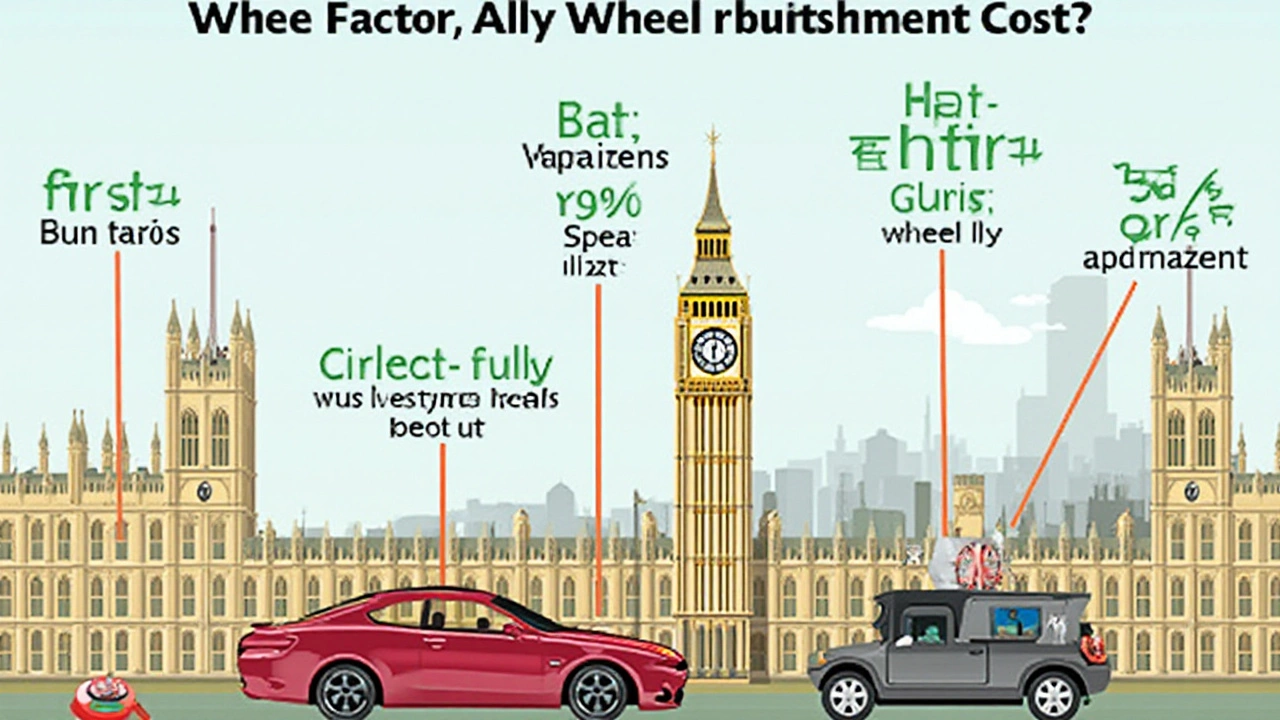
Choosing the Right Service
Picking the right service for refurbishing your alloy wheels isn't just about finding the cheapest option or the closest shop. It's an investment in quality and assurance. The very first step in this process is researching potential service providers. Do they have a portfolio of their past work? Reviews and testimonials are also invaluable. Sites like Trustpilot or Google Reviews can offer insight into past customers' experiences, shedding light on both their customer service and the quality of their work.
Another key aspect is understanding what exactly will be done to your wheels. Not all refurbishments are alike. Some shops might only touch up the visible damage, while others might strip and repaint the entire wheel. Ask questions about the process involved. Do they use powder coating or just a top layer of paint? Powder coating, while more durable, may come at a higher price. It's worth every penny if longevity is your goal.
Location and convenience are factors, too. It's tempting to go with a service that's nearby, but it’s crucial to weigh this against the quality of service offered. The best garage might be a drive away, but if they can offer a warranty on their work, that extra travel could be well worth it. Consider asking around in local car clubs or forums to see if fellow enthusiasts have recommendations. Sometimes, the community itself can be the best directory.
“Choosing the right service provider for alloy wheel refurbishment is like finding a doctor; you want someone who's not only qualified but also comes highly recommended,” said John Doe, a veteran in the automotive maintenance industry.
Don't shy away from discussing costs upfront, either. Transparency is a hallmark of professionalism. A capable and trustworthy provider will give you a detailed, itemized estimate before lifting so much as a wrench. Remember to factor in additional services like tire balancing and alignment checks, which some savvy garages might bundle together at a discount.
In addition to professional referrals, verifying the credentials of a workshop is essential. Are their technicians certified? Are there any industry accolades or affiliations to be aware of? These credentials, while not strictly necessary, do offer peace of mind. A well-documented reputation complemented by formal expertise stands as an unequivocal endorsement of their aptitude.
| Feature | What to Check |
|---|---|
| Warranty | Duration & coverage |
| Technician Certification | Accreditations |
| Process Transparency | Cost breakdown |
Finally, trust your instincts. Often, a simple conversation over the phone or in-person can tell you everything you need to know about a service. If something doesn’t feel right or the answers aren’t satisfactory, it’s okay to walk away. This is your hard-earned money and your beloved vehicle; you deserve a job well done by a service you can believe in.

